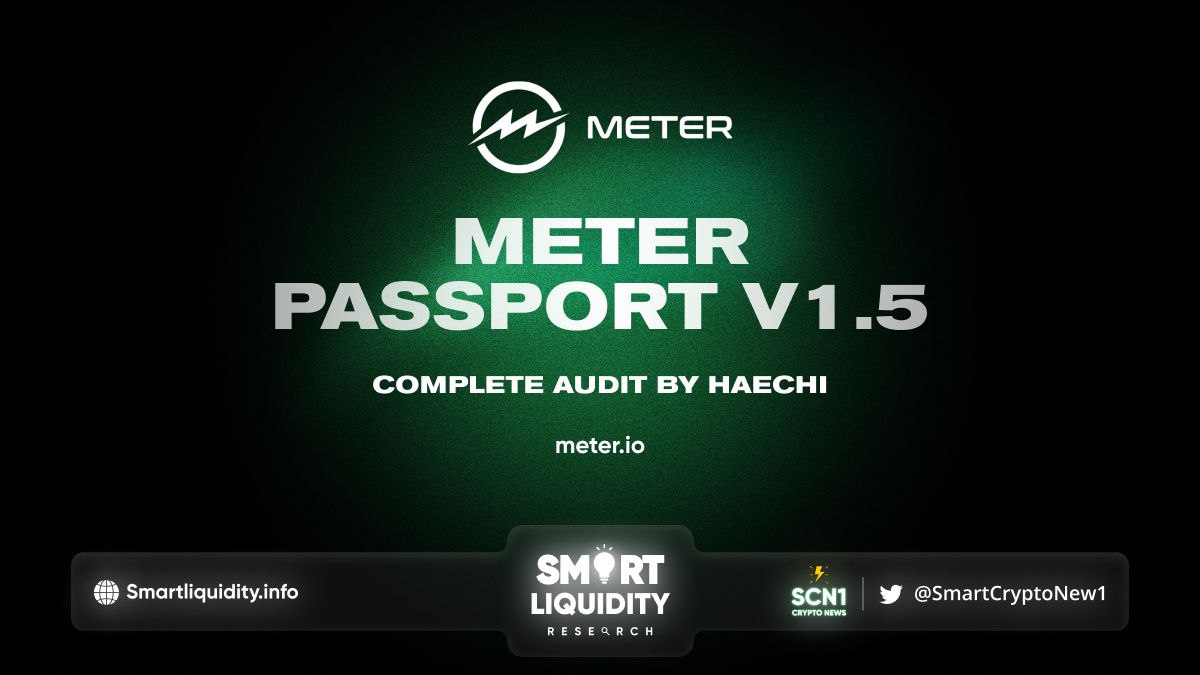Meter Passport Went Live


Meter Passport V1.5 went live after a rigorous audit by HAECHI. Meter Passport is an N-way blockchain router that allows both assets and smart contracts to travel across heterogeneous blockchain networks.
One of Meter’s goals is maximizing interoperability with other public blockchains. Meter Passports is currently secured by five relayers including Protofire, Harshquark, Wetez, InfinityStones, and Meter team through multisig contracts. The next version will support an unlimited number of relayers.
It can transfer native tokens, and tokens in various token standards like ERC20, ERC721, and ERC1155 in addition to passing arbitrary generic messages between blockchains.

A user transferring tokens from Chain A to Chain B first deposits the tokens into the bridge contract of Chain A. The contract locks the tokens on Chain A, emitting an event once the deposit is successful.
The relayers, off-chain operators of the system, will listen to these events and create a relay transaction to the relay chain. The Relayers propose a vote on the data of the deposit and submit their signatures on the relay chain.
Once the threshold is met, one of the relayers or any user can collect all the signatures and send them to Chain B. The smart contract on Chain B will validate again all the signatures and the deposit data and then release the fund on Chain B.
Salient Features
With Meter Passport v1.5, Meter Network is now used as the relay chain with a signature collection contract deployed on Meter for the relayers to vote.
Compared to other EVM chains, the instant finality behavior on Meter Network makes it a better Relay Chain. Essentially every confirmed transaction in the block is 100% finalized, introducing minimal delay and ensuring certainty to the cross-chain transactions.
The new relay chain design significantly reduces the operational overhead for the relayers. They just have to listen to the transactions on multiple networks and send transactions on the Meter network. Also, unlike passport v1, once a proposal is passed on the relay chain, only one transaction is needed on the destination chain to complete the bridging process.
The Addition of Dual RPC Endpoints
The addition of dual RPC endpoints for the relayers further increases the Relayer uptime. Such design allows more Relayers to join the cross-chain validation and makes the process more secure and censorship-resistant.
In addition, as long as there are enough relayers online to vote cross-chain transactions on the relay chain, the user could submit the relayers’ signatures directly to Chain B (Tutorial on this shortly). All these will dramatically enhance the liveness and usability of the bridge.
The Meter Passport Audit
The Meter Passport v1.5 smart contracts were developed on the ChainSafe v2.x bridge contracts. Meter’s additions were mainly focusing on the relay chain signature aggregation design. The original contracts were internally audited through a separate team at ChainSafe.
To ensure the security of the overall smart contracts, we spent over a month completing a thorough and rigorous audit of the final version of the smart contracts by HAECHI AUDIT.
During the audit, 8 findings of varying severity levels (three critical, two major, and three minor) were found and subsequently resolved to ensure that the codebase is rigorously tested and verified. HAECHI also recommended two tips to improve the codebase’s overall efficiency and usability.
ABOUT Meter
Meter is a high-performance blockchain infrastructure that scales and connects the financial internet. Meter is a dual token economy. A PoS governance token MTRG secures the ledger and a PoW-based metastable gas currency MTR. It aims to complete Satoshi’s original vision to create sound money independent of fiat currencies.
Website | Twitter | Meter Passport
RESOURCES




